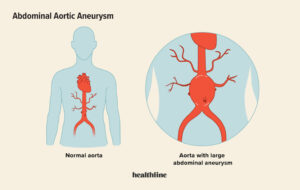 Understanding the Silent Threat: Risk Factors of Aortic Aneurysm
Understanding the Silent Threat: Risk Factors of Aortic Aneurysm
Introduction
The human body is a marvel of complexity and resilience, but it is not without vulnerabilities. One such potential health risk is an aortic aneurysm, a serious condition that can have life-threatening consequences if left untreated. Understanding the risk factors associated with aortic aneurysm is essential for early detection and preventive measures. In this blog, we’ll explore the risk factors of an aortic aneurysm and the importance of proactive healthcare to safeguard our cardiovascular health.
What is an Aortic Aneurysm?
An aortic aneurysm is a bulge or dilation in the wall of the aorta, the largest artery in the body that carries blood from the heart to the rest of the body. If left untreated, an aortic aneurysm can rupture, leading to severe internal bleeding and potentially fatal consequences. Early detection and timely intervention are crucial to prevent this catastrophic event.
Risk Factors of Aortic Aneurysm:
Age:
The risk of developing an aortic aneurysm increases with age. Individuals over 60 are more susceptible to this condition.
Gender:
Men are more likely to develop aortic aneurysms than women.
Family History:
A family history of aortic aneurysms or other cardiovascular conditions can increase the risk for an individual.
Tobacco Use:
Smoking is a significant risk factor for aortic aneurysms. The harmful chemicals in tobacco weaken the arterial walls and contribute to the formation of aneurysms.
High Blood Pressure:
Uncontrolled high blood pressure puts extra strain on the aortic walls, increasing the risk of developing an aneurysm.
Atherosclerosis:
The buildup of fatty deposits in the arteries, known as atherosclerosis, can weaken the arterial walls and make them susceptible to aneurysm formation.
Connective Tissue Disorders:
Certain connective tissue disorders, such as Marfan syndrome and Ehlers-Danlos syndrome, can be associated with an increased risk.
Trauma:
Aortic aneurysms can sometimes be caused by traumatic injuries, such as blunt force trauma or accidents.
Obesity:
Excess body weight puts additional stress on the blood vessels, increasing the risk of developing an aortic aneurysm.
Chronic Lung Disease:
Conditions like chronic obstructive pulmonary disease (COPD) have been linked to a higher risk.
Conclusion
An aortic aneurysm is a serious health condition that demands attention and understanding of its risk factors. Early detection and timely medical intervention are vital in preventing the rupture and severe consequences of an aneurysm. Regular health checkups, monitoring blood pressure, maintaining a healthy lifestyle, and seeking medical advice for any concerning symptoms are essential steps in safeguarding our cardiovascular health. If you have any risk factors or concerns related to aortic aneurysm, don’t hesitate to consult a healthcare professional who can provide guidance, support, and appropriate preventive measures to ensure your well-being and longevity.

 Understanding the Silent Threat: Risk Factors of Aortic Aneurysm
Understanding the Silent Threat: Risk Factors of Aortic Aneurysm